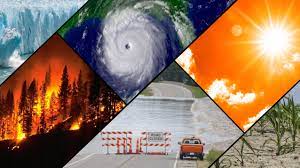The 2021 Nobel Prize in Physics was a notable one, recognizing discoveries that constituted the beginnings of climate science for the 20th century. With scientists measuring record-high temperatures last summer, the research provides a basis for understanding climate change, namely anthropogenic climate change, which demands our attention.
The prize was split in two, with half awarded to Syukuro Manabe and Klaus Hasselmann, and the other half to Giorgio Parisi. Manabe contributed momentous findings regarding interactions between radiation balance and vertical transportation of air. He eventually demonstrated the relationship between increased carbon dioxide levels in the atmosphere and surface temperature. Meanwhile, Hasselmann developed a model that connected weather and climate, attributing increased surface temperature to human emissions of carbon dioxide.
Hasselmann’s extensive career as a theoretical physicist began in 1957. While completing his PhD thesis, he detailed a method for understanding a specific facet of wave interactions. Klaus was especially interested in wave mechanics and, at the time, its physical manifestation in ocean wave dynamics. This work led to his first publication where he developed sea state prediction equations.
As his career progressed, Hasselmann founded the Max Planck Institute for Meteorology in 1975. Here, he developed his career-defining “stochastic climate model.” Up until the development of this model, it was generally believed that climate change could be traced to one or more external drivers. However, in Hasselmann’s model, climate was presented as a combination of internal random variability as well as external drivers. He described climate as being composed of various mathematical dimensions of noise and signals.
Noise refers to variability in climate systems — the pure randomness of weather occurrences. This is contrasted by the signals present within a climate system, which indicate a singular direct contributor to certain weather patterns. The term “noise” highlights the complex nature of climate systems characterized by disorganization and difficult interpretability. It is considered to be probabilistic, or only able to be described by probabilities, eliminating the possibility for a determinate mathematical solution to describe this physical process. In this way, the noise resides in higher, mathematical dimensions governed by probabilistic dynamics while the signals live in the lower dimensions, governed by deterministic dynamics. This contribution shifted the consideration of climate in the scientific community.
In tandem with this research, mathematical dimensions of space in climate were conceptualized in Hasselmann’s multiplex publication titled “PIPs and POPs: The reduction of complex dynamical systems using principal interaction and oscillation patterns.” Here, Haseelman sets forth a solution for separating the confusing and distorting noise from the external drivers of a climate system. By considering the deterministic qualities of a climate system, it was possible to separate signals from the random fluctuations characteristic of this climate model. He derived a set of differential equations to describe the low-dimensional system, which includes explicit external drivers affecting the climate. He referred to these as the “principal oscillation patterns,” or POPs. This concept addressed the issue of “detection and attribution,” which refers to a previous inability to discriminate between the random internal variations and external drivers of a climate system.
“For instance, the POP concept was used to predict the El Niño-southern oscillation.”
This research has been invaluable in detecting climate patterns within a seemingly chaotic climate trajectory. For instance, the POP concept was used to predict the El Niño–southern oscillation. And, while Manabe correlated increased global temperature to increased atmospheric concentrations of carbon dioxide, Hasselmann’s detection and attribution theory was influential in connecting this phenomenon to anthropogenic emissions of carbon dioxide. This discovery was used in the U.N. Intergovernmental Panel on Climate Change’s recognition of human-induced climate change in 1995 and its potential to intensify without effective policy changes targeting carbon dioxide emissions. Klaus Hasslemann’s noteworthy contributions have given life to today’s accepted theory of global warming by providing a foundation of scientific fact for this discourse.






